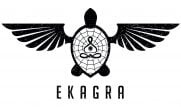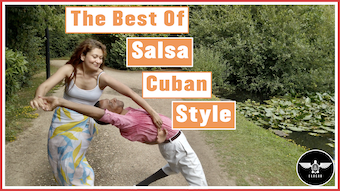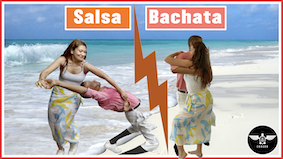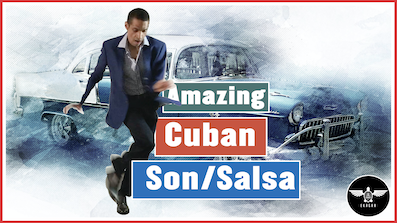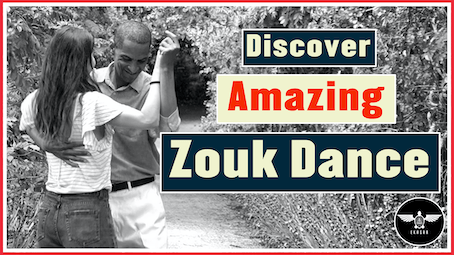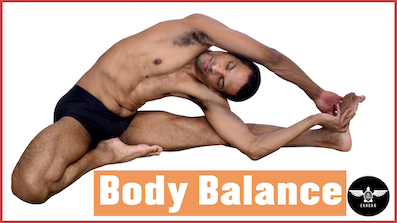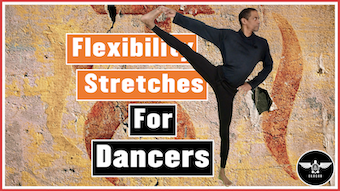
Salsa Cuban style is the best salsa. It’s playful and varied and serves as a great workout that can compete with any regular sports activity.
The dance originated in Cuba and drew its essence from the country’s many different Afro-Cuban dancing styles. With Abakua, Rumba, Chango, you have the African style. With Chachacha, Son, Danzon, and other kinds, you get the ballroom types.
1. Origins of salsa cuban style
Salsa Cuban style is a misnomer in that people categorized it this way so that it could sell outside Cuba. In fact, the dance is called casino and originated in the mid-1950s before salsa. Furthermore, It involved groups of couples who danced together in a circle, forming an everlasting “roulette”, like in a casino. It also descended from Son dancing. Finally, what we would call the Cuban salsa style today, involves different types of dances such as son, rumba, Chango, and many others. That’s why it is hard to find two professional dancers doing “Cuban salsa” the same way.
1.1. Part of the country’s identity
Another aspect of “Cuban salsa” is that it’s part of the country’s culture. Unlike other types of salsa (even if casino is not salsa) that do not permeate every aspect of one’s life, Cuban salsa (and Cuban dances in general) is an integral part of what defines the people. For that reason, passionate people should learn more about Cuban dances and not just one type. In doing so, you will discover that race, migration, tragedy, or social classes; are very well represented by the different Cuban dances and their origins.
1.2. Type of dances that define Salsa Cuban Style?
Cuban salsa takes from a wide variety of dances. Some of them are listed below.
– Son:
This dance is relatively slow, follows the clave strongly, and involves couples. The circular motion of this dance is strongly present in Cuban salsa. It relies heavily on the clave as one of its key instruments.
– Rumba:
This is the Afro-Cuban style of dance that has become the flagship of Cuba. It can be danced alone (Columbia) or with a couple (Guaguanco, Yambu), depending on the form. When practiced solo, it’s all about showing your dance skills. The point is to display your talents and quick wit. If it involves a partner, like guaguanco or Yambu, the male tries to “steal” the lady with constant attacks disguised by dance moves.
– Other types:
🔵 Chachacha: a syncopated style of dance
🔵 Danzon: thought to be the originators of son and later on salsa
2. Difference with NY style
The key difference with other salsa is that it’s not really salsa. That’s why many students who are not versed in the Afro-Cuban culture tend to brush it aside for the stylishly New York or LA styles. However, these students fail to understand that Cuban salsa is way richer because, unlike the other ones, it does not try to trim down on movements but rather incorporates as much of them as possible. That’s why dancers of the salsa Cuban style have many skills to play with. Which ultimately means they have more answers to the ever-changing tempo of Cuban music.
2.1. Other differences
Cuban Salsa also differs because it is danced in a circular and spacious fashion rather than in line. It involves many body variations, like going down on your leg muscles or using big arms and head movements. In some way, dancers of other forms of Salsa kick the spirit out of a move and only keep or extend the aesthetic part. As a result, that can lead to dancers not developing a real sense of rhythm for any kind of dance. And that’s why many dancers of other types of Salsa repeat endlessly the same moves no matter the song they dance to.
3. Why salsa Cuban style is unique
The key reason why this style is different is that it integrates so many different cultures, origins, and dance forms. As such, it’s almost impossible to characterize a Cuban salsa dancer. Each of them has his unique way of expressing himself/herself. Some might delve more into African roots with dance patterns that go back centuries. For example, a dancer will display moves typical of Chango or Abakua, which have their origins in Africa. Others might be more inclined to use dance forms closer to Son, Mambo etc.… Even inside a lyric, a band can change from a pure salsa form and enter a traditional African rhythm. Check out this song from Timba live, for example.
4. Rhythm of salsa Cuban style
The rhythm of Cuban salsa follows the drum and clave.
This instrument is important for many Cuban music categories, such as rumba, salsa, or son. Therefore, dancers are instructed at a young age to follow the clave to match their movements with the song’s beats. However, there are a few clave rhythms, such as Son and Rumba clave, so some training is needed. And it pays to know all these different rhythms of that instrument. Later the dancer can adapt his dance style as the music commands it. Still, the most critical clave beat to know is the Rumba 3/2. Generally speaking, on a basic Cuban salsa step, there are two measures of 4 beats each. You will then hear the clave five times on these eight beats. The dancer must then pay special attention to the clave’s first beat, as it will allow him/her to identify the looping patterns of a song. Once you have identified where these strokes happen, you can then dance accurately to the music you are listening to.

5. Important steps of Cuban salsa dance
5.1. Train your ears
As we just saw, practitioners need to know how to recognize the clave when they dance. Once you are confident identifying this instrument, you can incorporate others and dance the way you like. For example, I like to completely forget this clave rule and focus on other instruments when I get into a trance. I can do that because I know I can find the clave back whenever I want. It happens almost subconsciously. However, to achieve this state, you must develop good hearing for the clave since it is connected to our feet and steps. Therefore, you should train endlessly for many months to achieve a good level. You can check with my 5-level clave hearing program, which is entirely free to help you with this task.
– Listen to music incrementally
Another critical aspect of getting good hearing is knowing what music you should listen to. In The 18 Best Salsa Music For Beginners, I go over the best types of songs to listen to according to your current level. For example, if you are a beginner and watch my level 1 earing video, listen to rumba because it uses the clave and only a few other instruments. This is great because you can train your ears, start doing some great salsa steps and sink body movements into your dance skills.
5.2. Educate your body
Another aspect of the salsa Cuban-style is body movement. I mentioned that Afro-Cuban dances are essential in casino dance (or Cuban Salsa, to make it easy). Afro-Cuban movements are very powerful, with dances such as Chango, Abakua, or Rumba. They express many things, such as a tribute to gods, prayer, etc. When you execute these movements, your body can feel this power, but unfortunately, many people stick to the “plastic” side of the dance rather than undergo a complete immersion.
To master Cuban Salsa, you must therefore develop body movements. By the way, what I define as body movements, is a set of motions where you have total control over what you ask your body to execute.
– Assess your level
You might think, “I already have control over my body”. I will then ask you to do the following: Stand straight in front of a mirror and try to move your right shoulder in one direction while making sure your left one and other parts of your body do not move (or move as little as possible). Not that easy.
I have developed a free video to help you with that first stage. This video teaches you how to isolate parts of your body and can serve as an excellent warm-up for many physical activities.
5 Essential steps of salsa Cuban style
To learn Cuban Salsa properly, you should understand the basic steps well. From then, you can add up more complicated movements. You must have a strong foundation (and know how to be on beat with the music) to avoid a tremendous amount of frustration in the future. Otherwise, you will always be lost when a song is played. And to prevent this, use the steps and repeat them until you get the pattern right. I have developed a 5-level ear training program that helps you with the clave and functionally introduces these steps. First, I teach you to recognize where is this instrument in rumba songs, then in salsa songs, to finish on lyrics where you will not hear the clave but have to guess where it should be. Along with these instructions, I also demonstrate the basic salsa steps so you can apply them yourself.
6.1. Cuban Rumba step
Move number 1
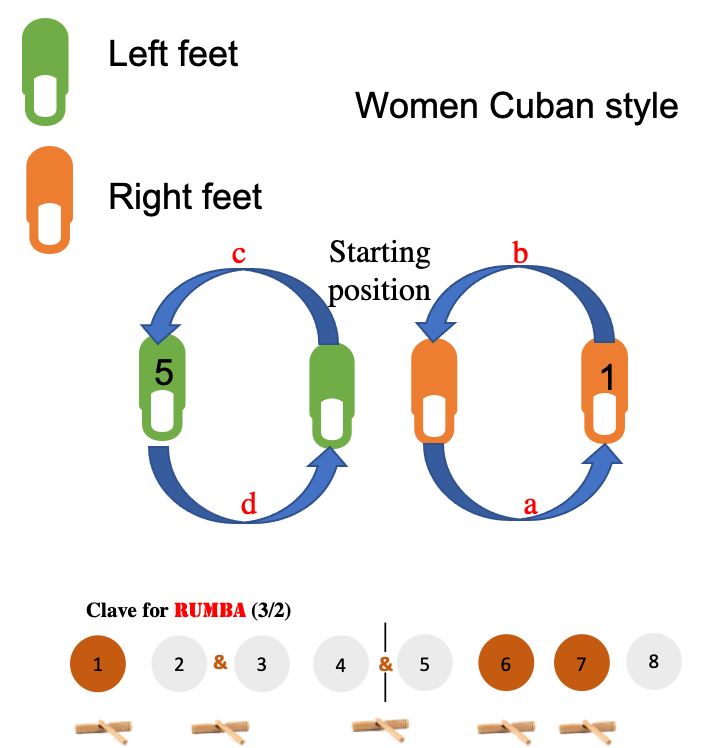
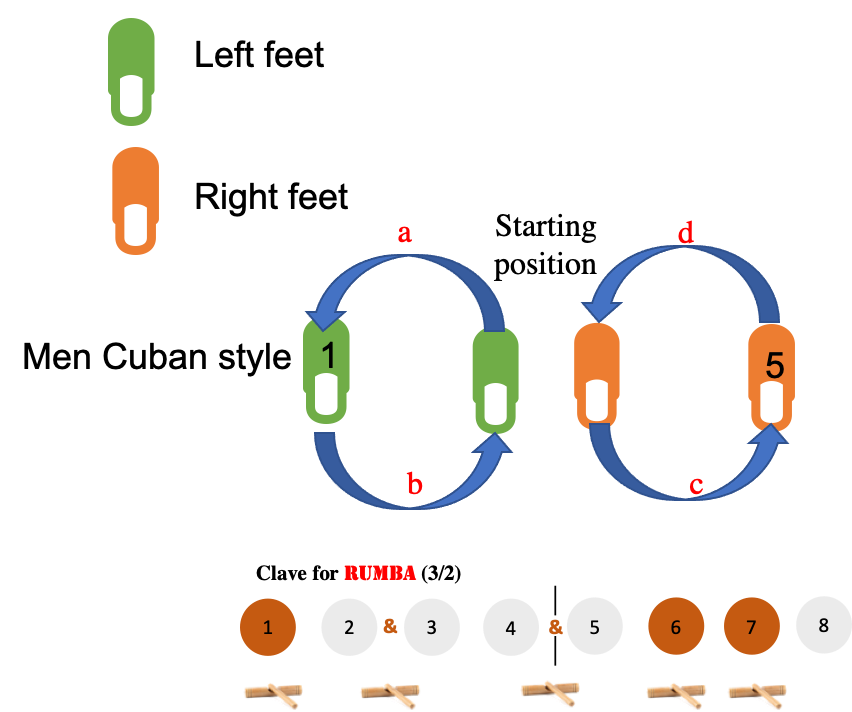
– How to
Simultaneously it would help if you use your hips to:
# shift your weight on one leg
# bend
# use your opposite arm and shoulder blade to create a perfect balance
Then come back to the center. Then, on the second measure of the basic step, you make the same motion with the opposite leg.
6.2. 1st Cuban salsa move that borrows from Son
This is a very effective step to train your ears and feet to match the rhythm of the clave. I love it, and beginners and professionals alike use this step often. However, only dancers with specific knowledge of rhythm know how to use it. Sometimes a salsa song can take a turn that is similar to Son. In that case, the dancer adapts his dance form to the music. It’s a straightforward step, but many people struggle with it. One key reason is that they are too attached to common forward and backward salsa steps, and their brains tend to shut down at the prospect of something different. Therefore, it’s better to learn it earlier rather than later.
As the man moves forward, the woman goes back. At the end of the steps she can move forward, and the man goes back.
Move number 2
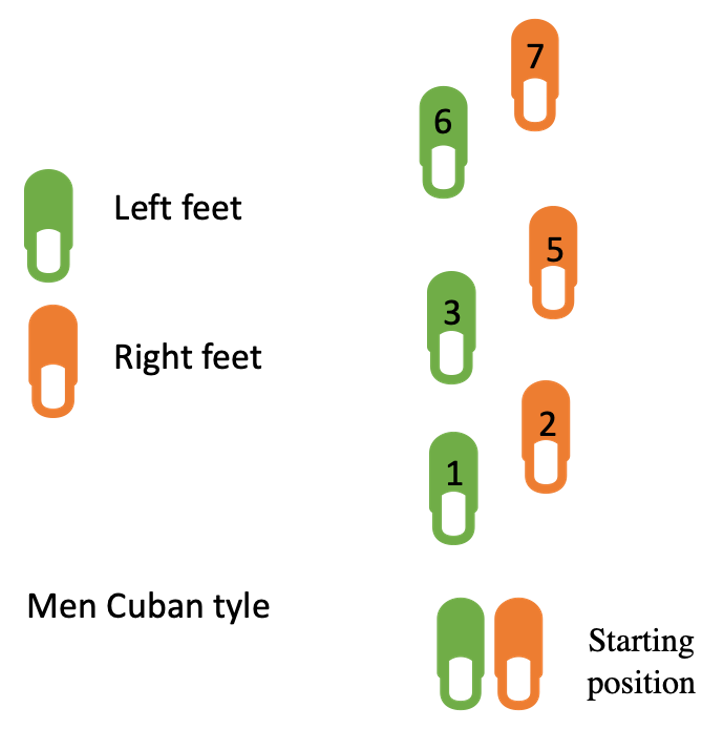
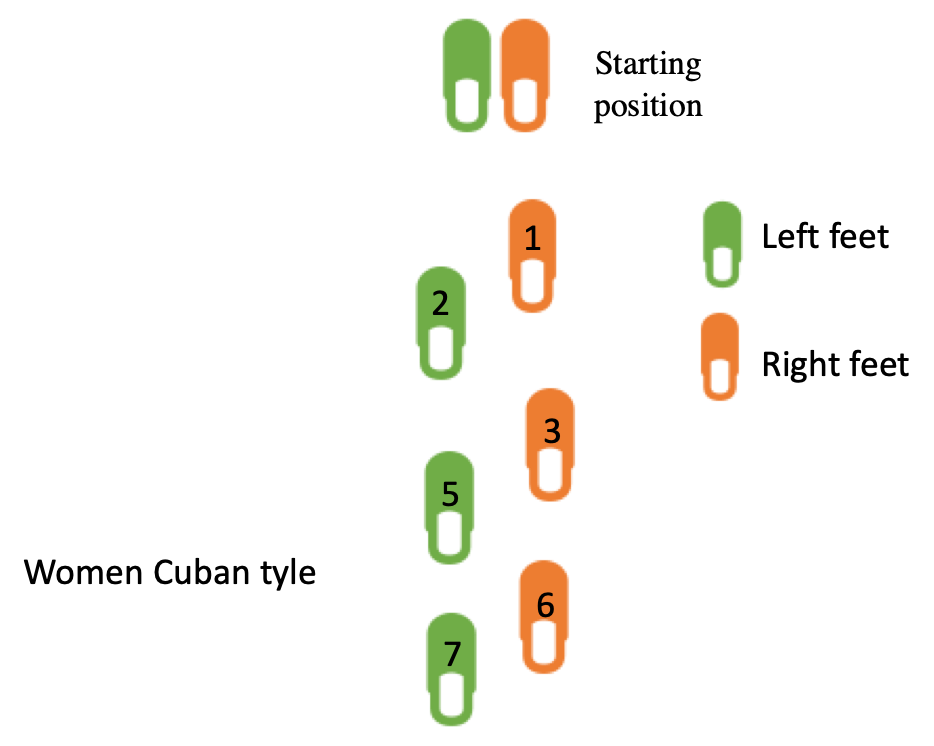
6.3. Third Cuban salsa style step
We will still use another popular son move to train our feet and ear coordination. It’s the same as the one mentioned above. Only this time, we use lateral movements. Here men and women move in the same direction. The man starts with his left leg while the lady uses her right one. They will therefore move in a perfect mirror match in the movement. Again, the partners must be close to each other as your hips and shoulders do most of the coordination.
Move number 3
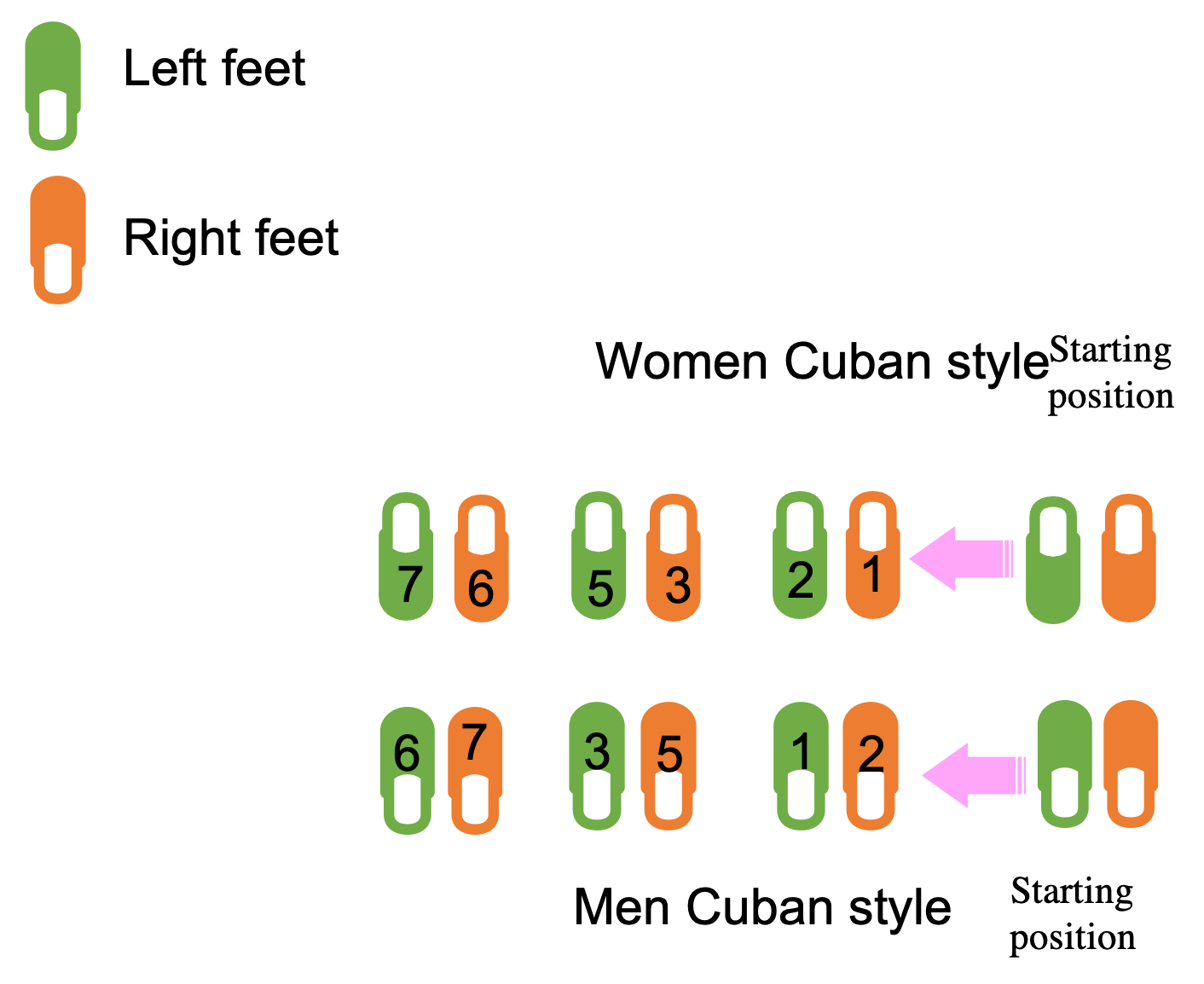
6.4. A classic of Salsa Cuban style
On the first beat, both partners move backward and then to the center on (3). Finally, on the 5th beat, they use the palm of their hands to push their partner away from each other gently.
Move number 4

This move is generally use to initiate turn patterns.
6.5. Salsa Cuban style can be simple:
Move number 5
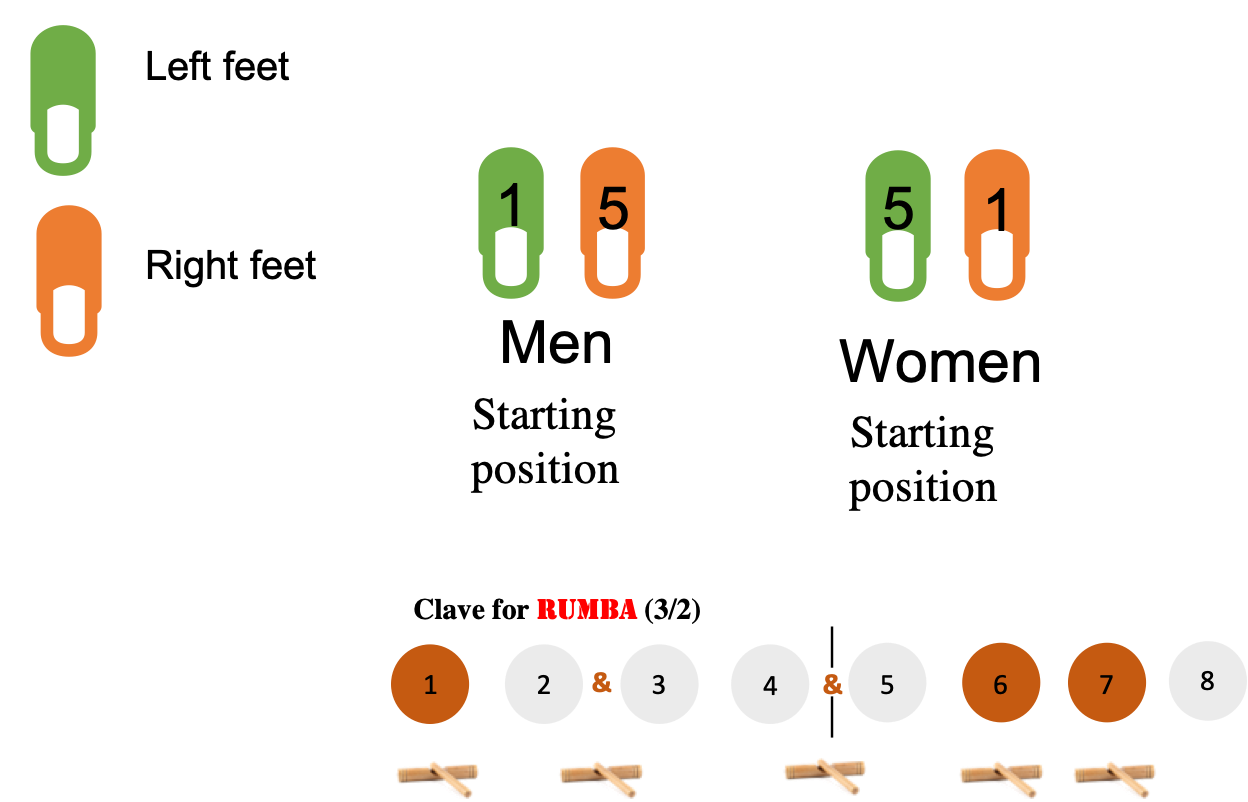
This step is similar to the rumba move we described earlier. It uses less effort and is about enjoying the music while dancing on beat. You do not move much, but use the pressure on the balls of your feet to gently shift your weight on the counts of 1 and 5. The hips and shoulders do most of the work. This move is better if both partners are close to each other, as it’s about enjoying your time when you dance.
7. Putting all the moves together
We can now start to play with the moves and put them in order as we see fit and according to logic. For example, we can begin with move1 and 5 followed by 2 and 3, then 4.
The benefit of this exercise is that it trains you to coordinate moves that you learn in a choreographed pattern. One of the main problems with students is they tend to forget the steps they learned in the studio once they go out dancing. It is expected as you need to practice often.
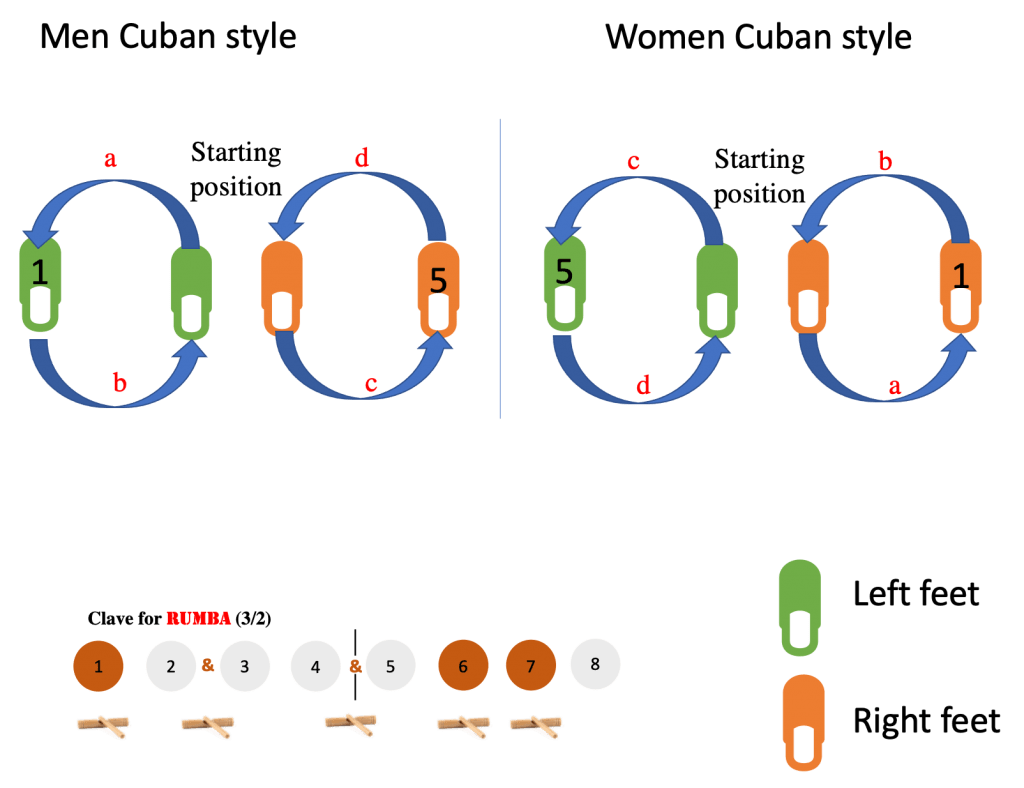
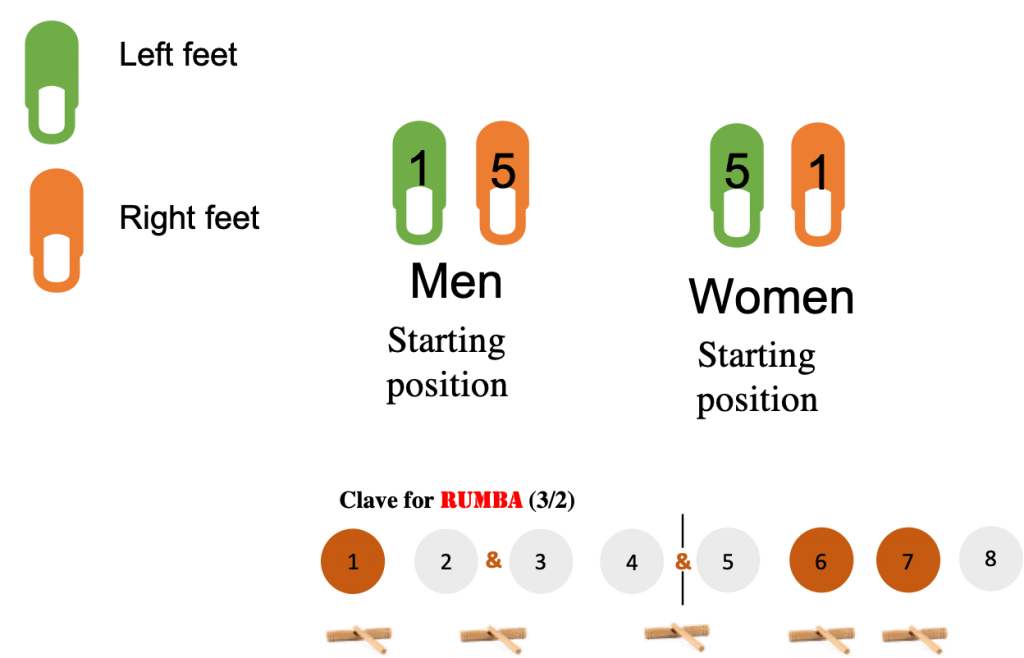
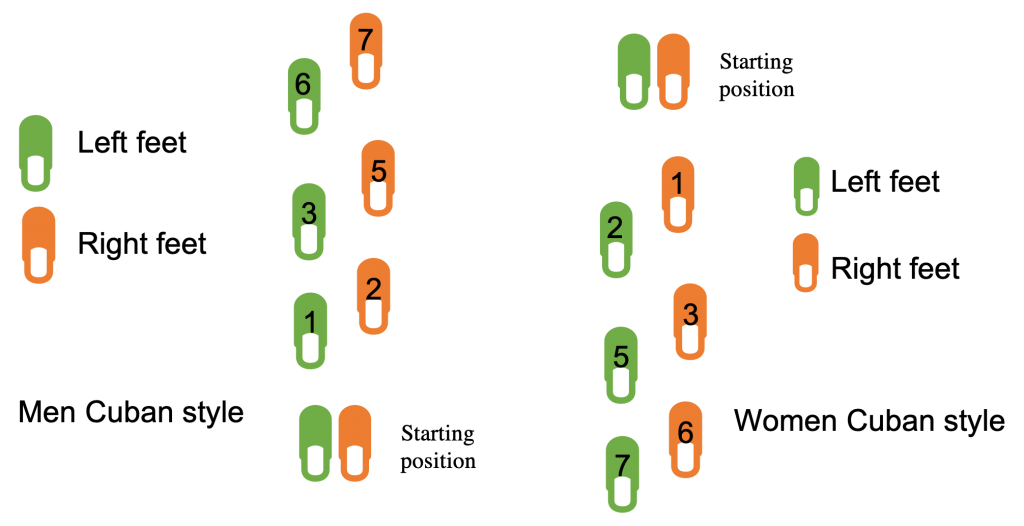
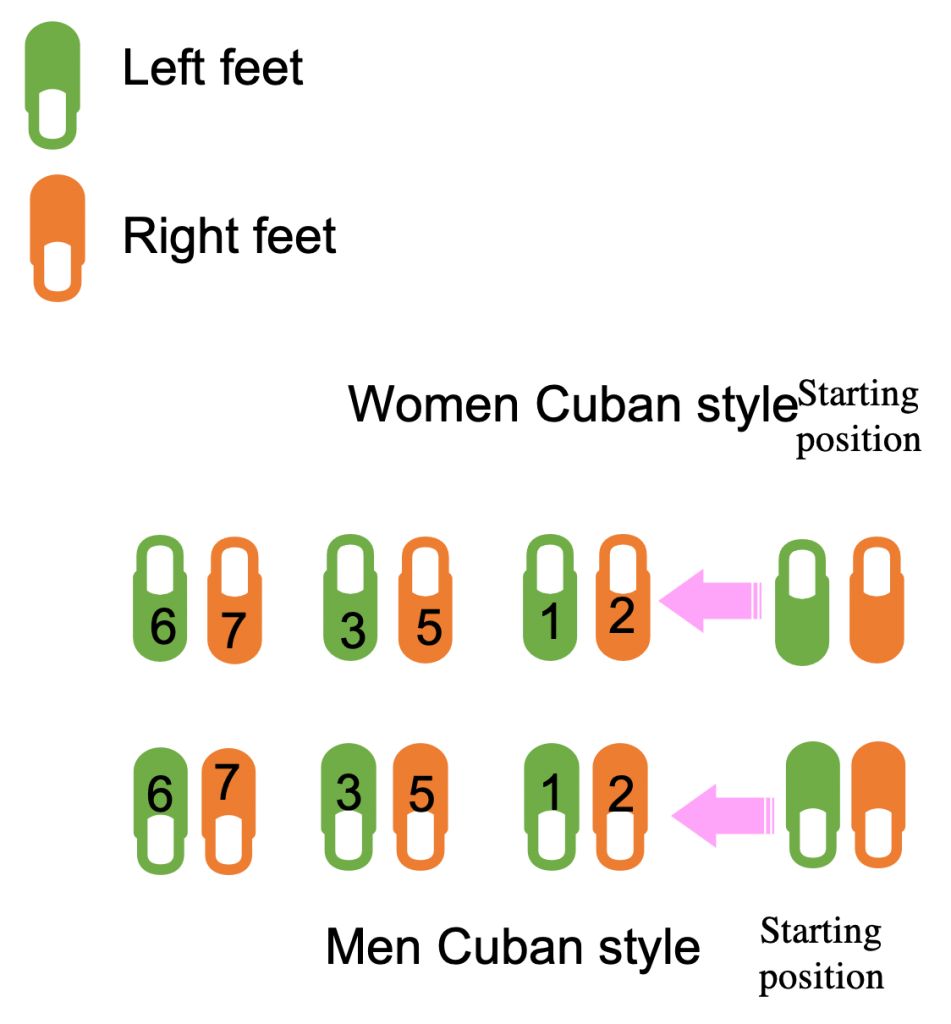
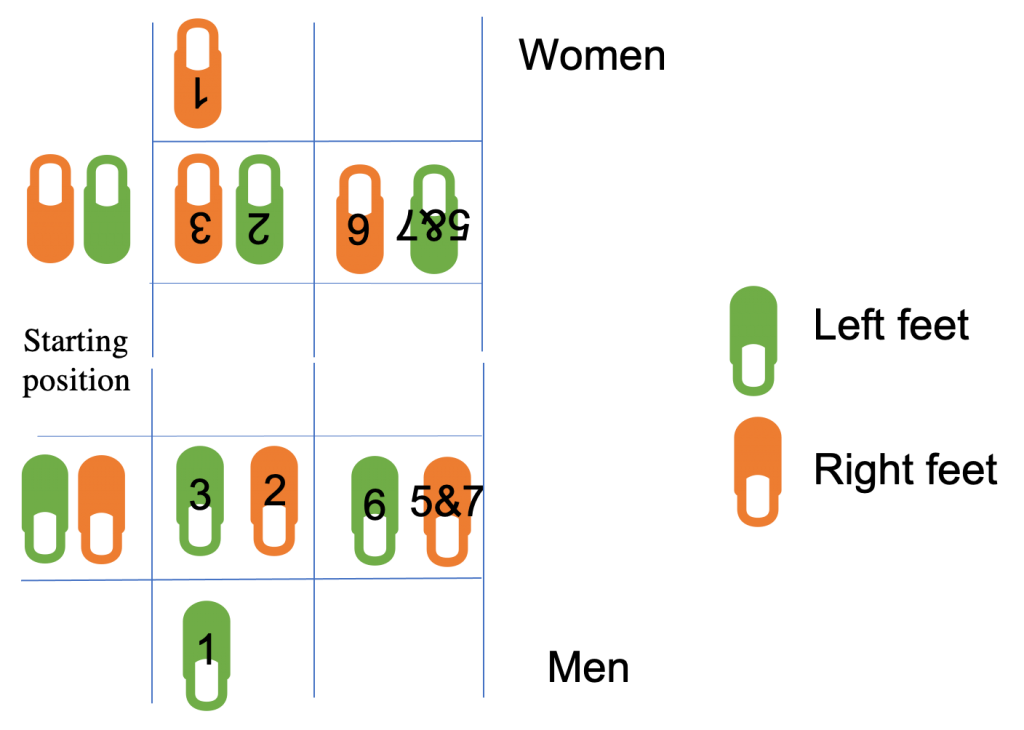
8. I have more to offer
Learn Cuban Salsa, Bachata, Improv’ and many other dance styles. Check out these videos and see what you can achieve in less than 3 months. Private lessons available for just £35/Hour. Free body movement and basic salsa and bachata lessons provided.
